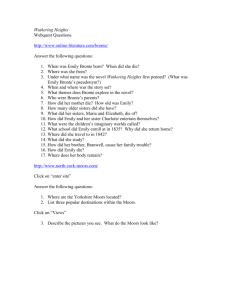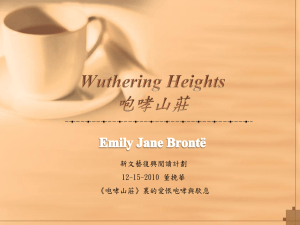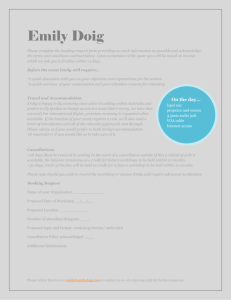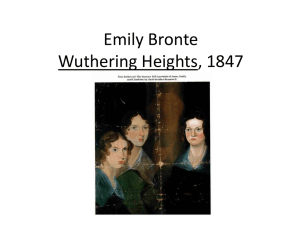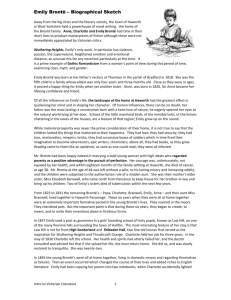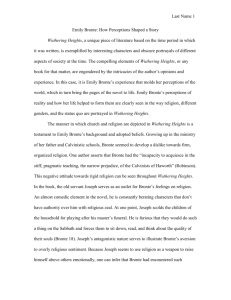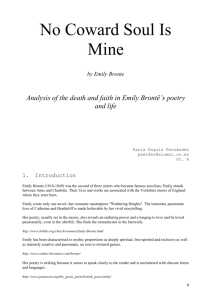An introduction about the book of “Wuthering Heights”
advertisement
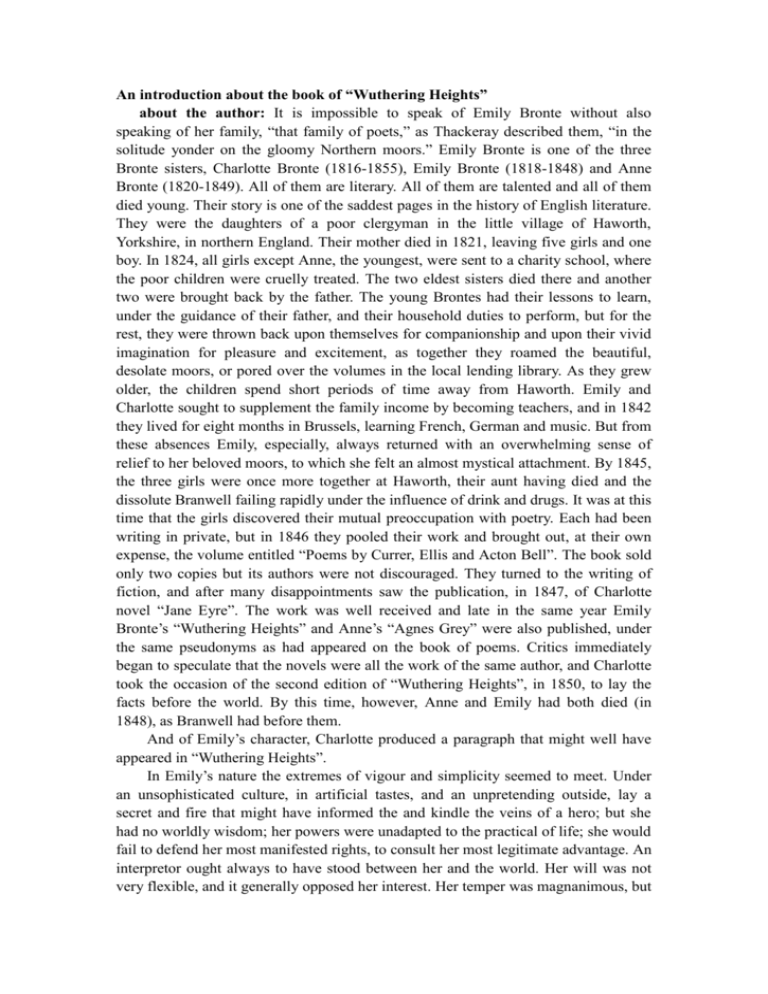
An introduction about the book of “Wuthering Heights” about the author: It is impossible to speak of Emily Bronte without also speaking of her family, “that family of poets,” as Thackeray described them, “in the solitude yonder on the gloomy Northern moors.” Emily Bronte is one of the three Bronte sisters, Charlotte Bronte (1816-1855), Emily Bronte (1818-1848) and Anne Bronte (1820-1849). All of them are literary. All of them are talented and all of them died young. Their story is one of the saddest pages in the history of English literature. They were the daughters of a poor clergyman in the little village of Haworth, Yorkshire, in northern England. Their mother died in 1821, leaving five girls and one boy. In 1824, all girls except Anne, the youngest, were sent to a charity school, where the poor children were cruelly treated. The two eldest sisters died there and another two were brought back by the father. The young Brontes had their lessons to learn, under the guidance of their father, and their household duties to perform, but for the rest, they were thrown back upon themselves for companionship and upon their vivid imagination for pleasure and excitement, as together they roamed the beautiful, desolate moors, or pored over the volumes in the local lending library. As they grew older, the children spend short periods of time away from Haworth. Emily and Charlotte sought to supplement the family income by becoming teachers, and in 1842 they lived for eight months in Brussels, learning French, German and music. But from these absences Emily, especially, always returned with an overwhelming sense of relief to her beloved moors, to which she felt an almost mystical attachment. By 1845, the three girls were once more together at Haworth, their aunt having died and the dissolute Branwell failing rapidly under the influence of drink and drugs. It was at this time that the girls discovered their mutual preoccupation with poetry. Each had been writing in private, but in 1846 they pooled their work and brought out, at their own expense, the volume entitled “Poems by Currer, Ellis and Acton Bell”. The book sold only two copies but its authors were not discouraged. They turned to the writing of fiction, and after many disappointments saw the publication, in 1847, of Charlotte novel “Jane Eyre”. The work was well received and late in the same year Emily Bronte’s “Wuthering Heights” and Anne’s “Agnes Grey” were also published, under the same pseudonyms as had appeared on the book of poems. Critics immediately began to speculate that the novels were all the work of the same author, and Charlotte took the occasion of the second edition of “Wuthering Heights”, in 1850, to lay the facts before the world. By this time, however, Anne and Emily had both died (in 1848), as Branwell had before them. And of Emily’s character, Charlotte produced a paragraph that might well have appeared in “Wuthering Heights”. In Emily’s nature the extremes of vigour and simplicity seemed to meet. Under an unsophisticated culture, in artificial tastes, and an unpretending outside, lay a secret and fire that might have informed the and kindle the veins of a hero; but she had no worldly wisdom; her powers were unadapted to the practical of life; she would fail to defend her most manifested rights, to consult her most legitimate advantage. An interpretor ought always to have stood between her and the world. Her will was not very flexible, and it generally opposed her interest. Her temper was magnanimous, but warm and sudden; her spirit altogether unbending. Emily Bronte was perhaps not so unworldly, not so unadapted to the practical business of life as her sister suggested she was. At any rate, in “Wuthering Heights” she gives evidence of having had a very firm grasp of those realities of life with which she came into contact every day, and beyond that, of those realities whose mastery we might even be surprised to find in the average man of affairs. Much of the plot of “Wuthering Heights” turns on the rules of inheritance of the day and Emily’s understanding of these rules seems to have been all that the most practical man could desire. about the book: Still it would clearly be wrong to speak of “Wuthering Heights” as a worldly book. The chief qualities of Emily’s mind, as they emerge from the story, are its lyrical bent and its mysticism. By mid-nineteenth century standards, the book is indeed the rude, insular book a number of its first critics found it. Emily saw the principal human conflict as one between the individual and the dark, questioning universe symbolized, in her novel, both by man’s threatening and hardly-to-be-controlled inner nature, and by nature in its more impersonal sense, the wild lonesome mystery of the moors. Thus the love of Heathcliff and Catherine, in its purest form, expresses itself absolutely in its own terms. These terms may seem, to a conventional mind, violate, and even repellent. But having been generated by that particular love, they are the proper expressions of it. The passionately private relationship of Heathcliff and Catherine makes no reference to any social convention or situation, and, indeed, it is doomed only when Cathy begins to be attracted to the genteel ways and the social graces of Thrushcross Grange, and is led, through them, to abandon her true nature. Whether or not we try to account for this extraordinary inwardness of Emily’s book by noting the author’s gloomy, isolated children, that inwardness, that remarkable sense of the privacy of human experience, is clearly the central vision of “Wuthering Heights”.
